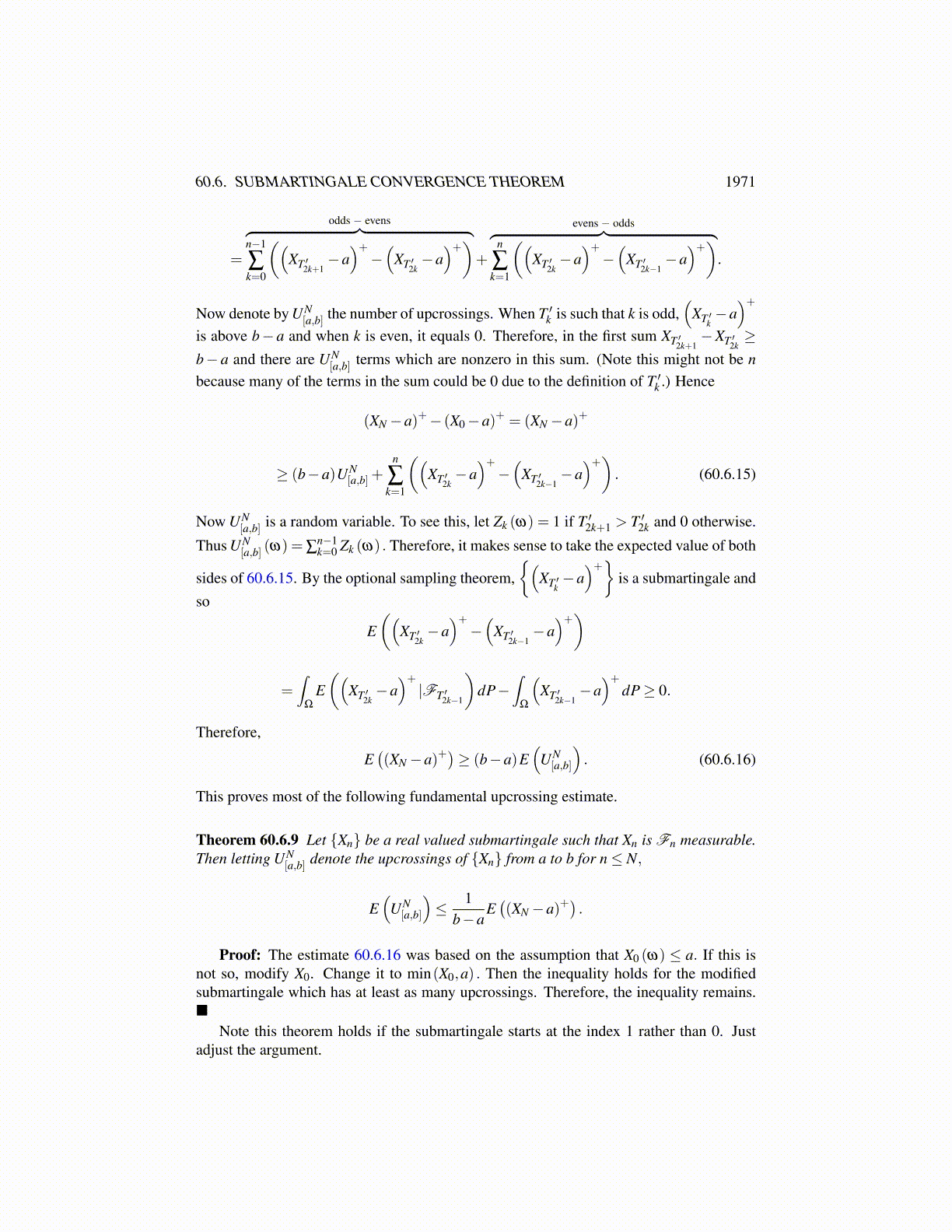
60.6. SUBMARTINGALE CONVERGENCE THEOREM 1971
≤ λP([
max1≤k≤n
Xk ≥ λ
])+λP
([min
1≤k≤nXk ≤−λ
])≤ 2E (|X1|+ |Xn|)
and this proves the last estimate.
60.6.3 The Upcrossing Estimate
A very interesting example of stopping times is next. It has to do with upcrossings. Firsthere is a lemma.
Lemma 60.6.5 Let {Fk} be an increasing sequence of σ algebras and let {X (k)} beadapted to this sequence. Suppose that X (k) has all values in [a,b] and suppose σ isa stopping time with the property that X (σ) = a. Let τ (ω) be the first k > σ such thatX (k) = b. If no such k exists, then τ ≡ ∞. Then τ is a stopping time. Also, you can switcha,b in the above and obtain the same conclusion that τ is a stopping time.
Proof: Let I be an interval and consider X (k∨σ) . Is k→ X (k∨σ) adapted? Let I bean interval. Is
A≡ X (k∨σ)−1 (I) ∈Fk?
We know that this set is in Fk∨σ .
A = A∩ [σ ≤ k]∪(
X (k∨σ)−1 (I)∩ [σ > k])
(♠)
Consider the second set in♠. There are two cases, a∈ I and a /∈ I. First suppose a /∈ I. Thenif ω ∈ [σ > k] , it follows that X (k∨σ) = X (σ) = a. Therefore, in this case, the set on theright in ♠ is empty and the empty set is in Fk. Next suppose a ∈ I. Then for ω ∈ [σ > k] ,
X (k∨σ (ω)) = X (σ (ω)) = a ∈ I
and so each ω ∈ [σ > k] is in the set X (k∨σ)−1 (I) and so, in this case, the set on the rightequals
[σ > k] ∈Fk
Now consider the first set in ♠,
A∩ [σ ≤ k] = A∩ [σ ∨ k ≤ k] ∈Fk
by the definition of what it means for the set A to be in Fk∨σ . The argument proceeds inthe same way when you switch a,b.
Definition 60.6.6 Let {Xk} be a sequence of random variables adapted to the increasingsequence of σ algebras, {Fk} . Let [a,b] be an interval. An upcrossing is a sequenceXn (ω) , · · · ,Xn+p (ω) such that Xn (ω)≤ a,Xn+i (ω)< b for i < p, and Xn+p (ω)≥ b.